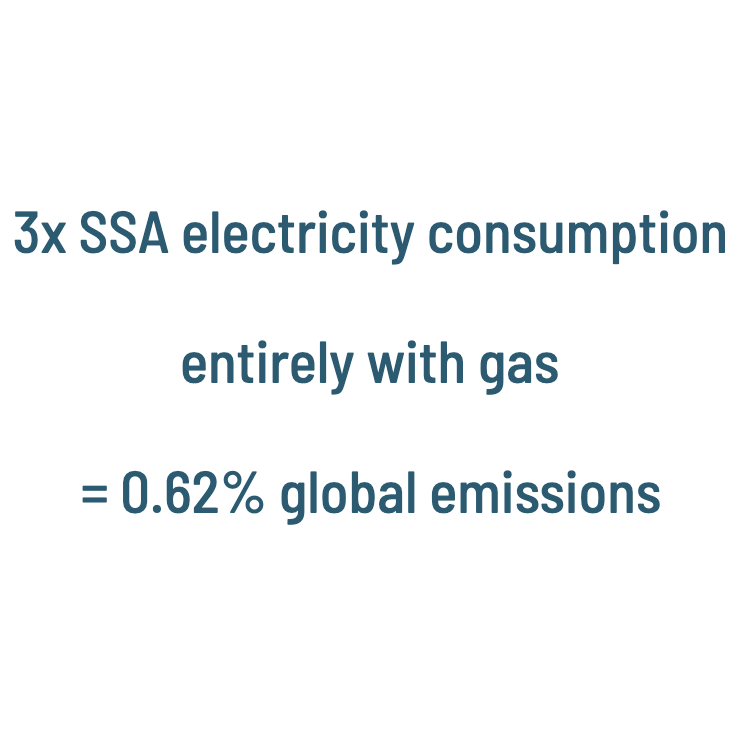What exactly is Africa’s role in climate mitigation?
We already know that the entire continent accounts for just 3% of cumulative CO2 emissions. If we subtract North Africa and (relatively-rich, relatively high-emitting) South Africa, that leaves 48 countries — and more than one billion people — responsible for less than 1% of cumulative emissions. Based on this alone, the potential for climate mitigation in sub-Saharan Africa is low.
And while people in these 48 countries have literally done nothing to cause climate change, they are likely to endure the worst effects of extreme weather, drought, and soaring temperatures. This suggests an even stronger climate policy emphasis on adaptation and resilience. After all, the best defense against a changing climate is development. To raise productivity, create jobs, and grow incomes, Africans will need a whole lot more energy.
Maybe we need to worry about where all that new energy will come from? Africa is home to some of the largest natural gas reserves. What if those billion people used natural gas to generate a lot more electricity? Some governments, like the UK, are actively considering a ban on development finance for any fossil fuel investments on the basis of climate concerns. Taking gas off the table would clearly slow Africa’s development. But would it be effective for climate mitigation?
Let’s take this logic to an extreme. Imagine if the one billion people living in Sub-Saharan Africa tripled their electricity consumption overnight and 100% of that new power came from natural gas. This is of course implausible for lots of reasons and no one is proposing it. It would bring tremendous benefits to the energy-poor, but would also be the hypothetical worst case scenario for those primarily concerned about blowing the global carbon budget. So, we did the math.**
For those 48 countries and 1 billion+ people, the effect would be equivalent to 0.62% of annual global emissions. That’s less than the average yearly global increase over the past decade. And it’s smaller than the emissions of single countries like Spain, Malaysia, or Ukraine — or even just the US state of Louisiana.
| How much would tripling Africa’s electricity via gas alone affect climate? | |||
|---|---|---|---|
| — | Sub-Saharan Africa | SSA ex-SA | Details |
| Current Population | 1,078,000,000 | 1,020,220,000 | World Bank (2018) |
| Current Consumption (annual kWh/per capita) | 485 | 264 | World Bank (2014) |
| Tripled Consumption (annual kWh/per capita) | 1,455 | 792 | Current x 3 |
| Additional Consumption (annual kWh/per capita) | 970 | 528 | Tripled Value – Current |
| Total Additional Consumption (MWh) | 1,045,660,000 | 538,676,160 | Additional x Population |
| Natural Gas Emissions Rate (Tons CO2/MWh) | 0.417 | 0.417 | EIA (2018) |
| Total Additional Emissions (Gigatonnes CO2) | 0.44 | 0.22 | Emissions Rate x Additional |
| Current Global CO2 Emissions (Gigatonnes CO2) | 37.1 | 37.1 | WRI/Global Carbon Project (2018) |
| Fraction of Total Emissions | 1.2% | 0.62% | Additional / Global Emissions |
**hat tip to Steve Brick at Northwestern’s Kellogg School of Management at Northwestern for this idea.
Correction: The original version of this blog cited 47 Sub-Saharan countries when excluding South Africa. This was because the World Bank list for Sub-Saharan Africa did not include Djibouti. We’ve re-inserted Djibouti for a total of 48 countries.


